How do you decorate as a minimalist? Ideas for interiors that are pared-back, but never bare
These minimalist decor ideas, from soothing color palettes to simple pieces of statement furniture, will ensure your home is stylish, not stark
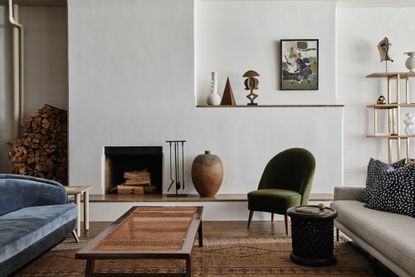

Minimalist decor ideas can really help your home become a calming, nurturing and serene oasis, a sanctuary away from day-to-day life where you can relax and unwind. The minimalist style, with its calming color palette of whites and neutrals, natural materials and paired back decorative accessories, adds calmness and balance which is important in busier rooms of the homes.
'Warm, neutral colours, soft textures combined with clean lines and matt finishes are the key ingredients for successful minimal scheme,' says Kashi Shikunova of minimalist interior design company, YAM Studios. Nowhere does architect Ludwig Mies van der Rohe's mantra of 'less is more' apply more to than the principal of minimalism. Read on for our tips for how to decorate in a minimalist way that really embraces this modern interior design style.
How do I decorate in a minimalist style?
There are misconceptions about minimalism that it's void of decorative elements, but this doesn't have to be the case. 'People have a very wrong belief that a minimalist interior requires homeowners don't have any stuff, says Kashi. 'Even the most minimalist people will have some things which they need or want to keep for sentimental purposes,' she says.
Instead, try a 'soft minimalist' approach, a form of minimalism that allows you to employ minimalist elements in your design, but allows you to have fun and explore the decorative aspect too - the best of both worlds. When it comes to decor, choose a few carefully curated pieces that will add visual interest without overwhelming the space. For key decorative pieces of furniture that work in a minimalist scheme, read on for our top tips from the designers.
Oonagh is an interiors writer and editor. She spends her days interviewing leading interiors industry experts to bring the latest ideas and trends to her readers. For this piece, she spoke to the designers who specialize in minimalist designs to understand the essence of this interior design styles.
1. Embrace the look with a minimalist coffee table
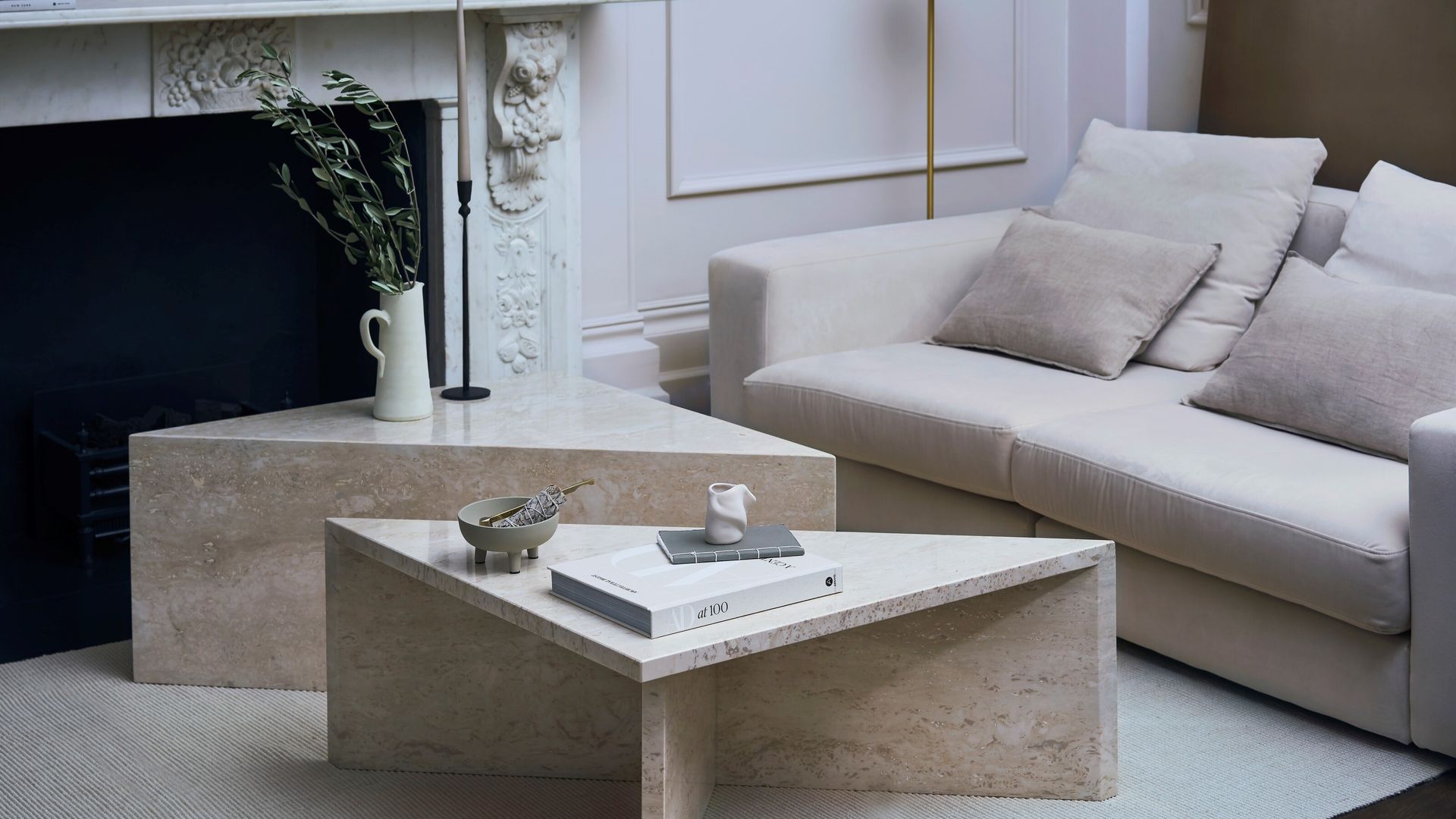
A coffee table can be a key element in your minimalist home, tying a scheme together in perfect harmony and providing a central focal point in the room. Coffee table trends have been moving towards more simple, statement pieces that are both functional and in line with a minimalist aesthetic. In this example, the clean lines and palette of the color table are akin to minimalism. 'The MAIE aesthetic uses a muted and subtle color palette across our range of stones and utilizes triangular shapes, one of the most stable of forms,' explains Theres Hoyos, founder and creative director at MAIE. The table also exemplifies a considered design, another lynchpin of minimalism.
'Minimalism is about a more considered design and we have designed our coffee tables with that sentiment in mind,' adds Theres. 'Our coffee tables appeal to the less is more ethos as beyond aesthetics, they are forever pieces that become part of a home’s stories and a small manifestation of moments well lived.'
2. Buy furniture with clean lines and soft curves
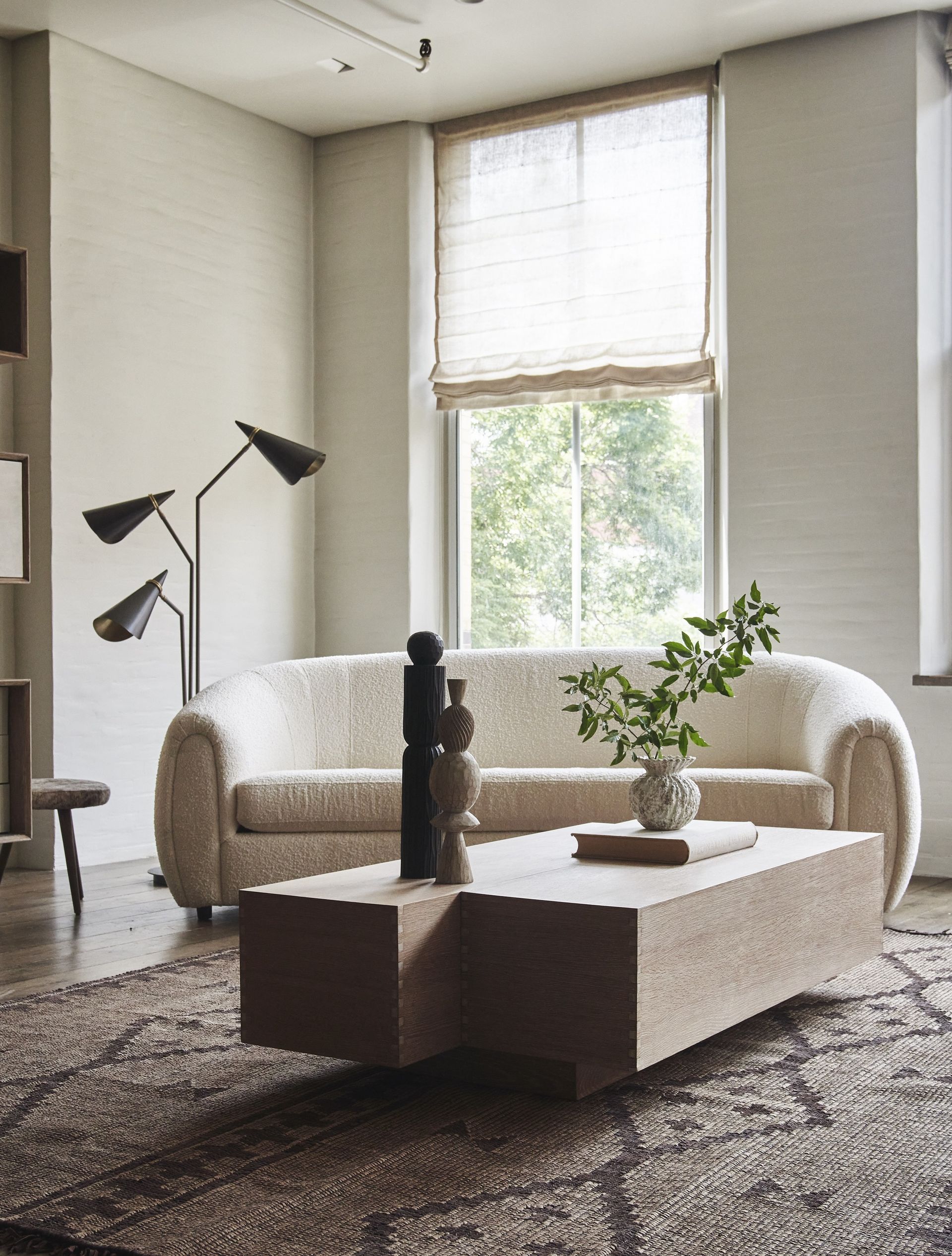
When picking out those key pieces of furniture, think about smooth, clean lines and sweeping curves. Nothing that jars with the scheme and only shapes that will help usher in this calming mood that minimalism is all about.
'Furniture with clean smooth lines without ornate details tends to work best in a minimalist space,' says interior designer, Christiane Lemieux. 'This is true for both straight-sided and curved furniture. A beautiful curved form, like our Rouen sofa can add a lot of minimal presence to a space while still feeling warm and inviting.'
3. Decorate with a simple rug to tie your scheme together
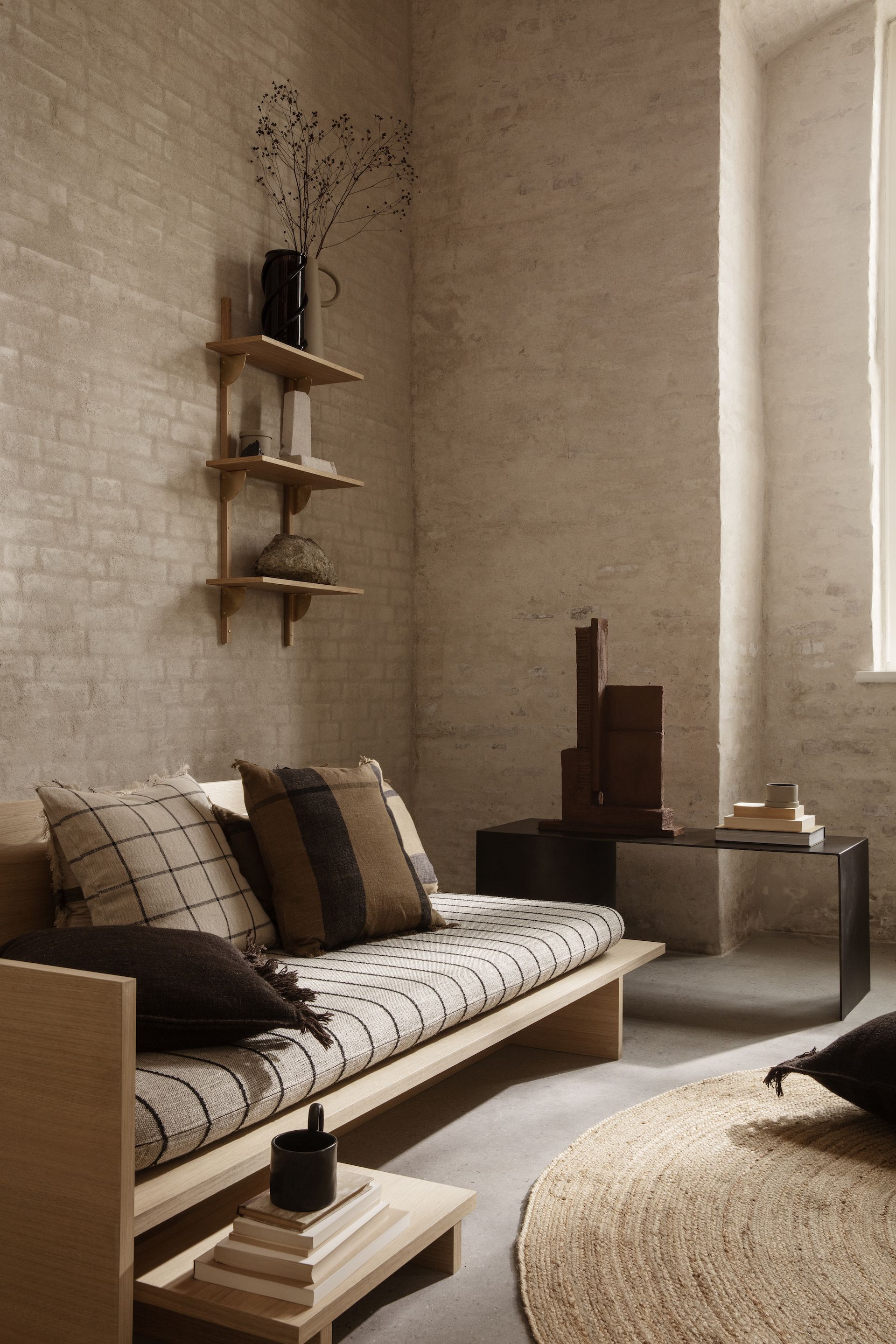
A rug in neutral or earthy tones is a great minimalist decor accessory that will work well to add warmth to a minimal space, and can tie a room together without distracting from the other accessories in the room. It's about adding texture to the space without creating a harsh contrast between the rug and a hard floor.
A high pile rug can reinforce the idea that a minimalist space is for relaxation purposes, and a rug is a good opportune moment to embrace a natural material.
For the ultimate rug material, it’s got to be natural wool. ‘Overall, a wool pile is the best choice for strength and durability,’ says Simon Laurenceau of French fabric company Pierre Frey. Wool is also supremely comfortable, as the threads spring back with softness after being walked on. Other natural fiber rugs that might work for a minimalist space include cotton or jute, with golden tones that give off that coveted Japandi minimalist look - a hybrid of Scandi and Japanese interior styles.
In terms of shape, a rug should be simple, urges designer Julia Dempster. 'While the goal of minimalism is simplicity, a rug is a place where you can introduce some color and pattern. A patterned rug brings a bit of character to the space, while sleek white walls and sky-high ceilings keep the vibe open and airy. It's a place for a touch of color without overwhelming the design.'
4. Invest in quality, long term pieces

Ultimately, less is more when it comes to minimalist decor, so identify what your key pieces of furniture and accessories are and buy what you need and stick to it. 'One of the many upsides to a minimalist lifestyle is that it enables you to invest in fewer, better pieces of furniture,' says Julia. 'When it comes to minimalist furniture and decor, opt for timeless well-made pieces that will stand the test of time - these never go out of style.
'If you want the less is more look, try investing in larger items rather than smaller pieces of furniture.' Large-scale pieces have more of an impact on the eye and help create a simple yet stunning space. Look for flexible living room furniture, for example, that can perform multiple functions or even be moved around from room to room.
Porada is one such brand that encourages a minimalist philosophy through hand-crafted pieces that are to be bought once and made to last. 'Our philosophy expresses minimalism in raw materials originating from nature, handcrafted know-how and creativity: the three pillars of our collection create pieces meant to last over the time,' says Carlo Ballabio, head of research and development of Porada. The above Ziggy table is the perfect example of a minimalist piece with a mid-century twist.
5. Decorate with a muted color palette
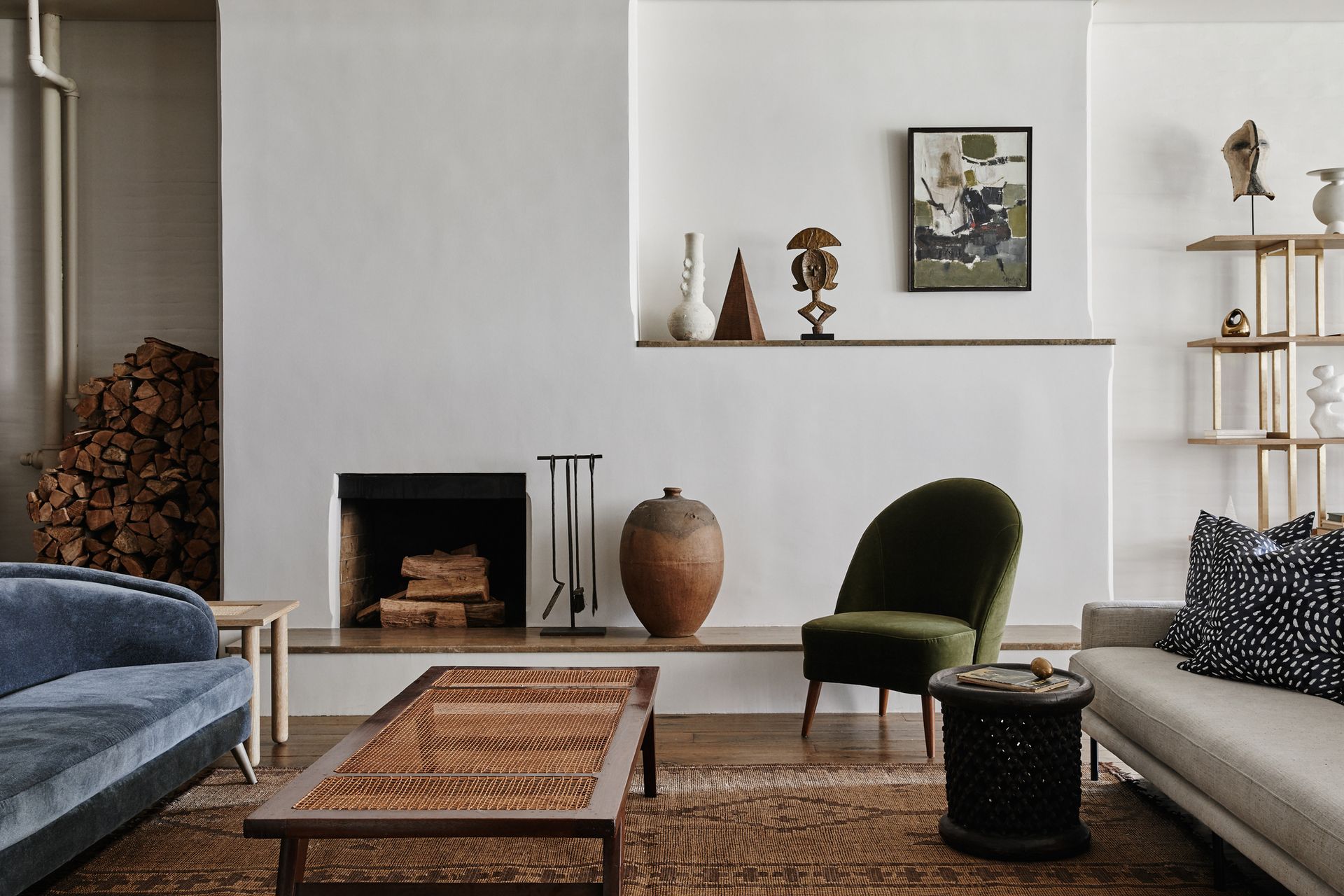
The minimalist style is all about a subdued and understated color palette. This doesn't necessarily mean going all stark white, however, and you can mix things up with a white of a differing hue and throw in some colors from a neutral color scheme. 'Choose a relaxing muted color palette for your anchoring furniture pieces like sofas and accent chairs,' advises Christiane. In terms of the right palette for minimalism, 'you can never go wrong with neutrals like ivory, grey and tan,' urges Christiane. 'But colors can also feel calming and minimalist if they are less saturated in color. We love a good dusty mauve or olive tone.'
Interior designer, Julia advises going for the use of three in a nod to the 60-30-10 decorating technique which sees one main color, one secondary color, and one accent color used to create a cohesive color scheme. 'Pick one to three materials or colors to use consistently throughout your home, keeping practicality and function in mind.'
'Stick with materials that feel light and airy, such as bleached oak or lighter concretes against white walls,' Julia adds. 'If you’re working with a predominantly white color scheme, a popular option for minimalist decor, adding natural materials or tones can add warmth to your home.'
6. Declutter your possessions with smart storage
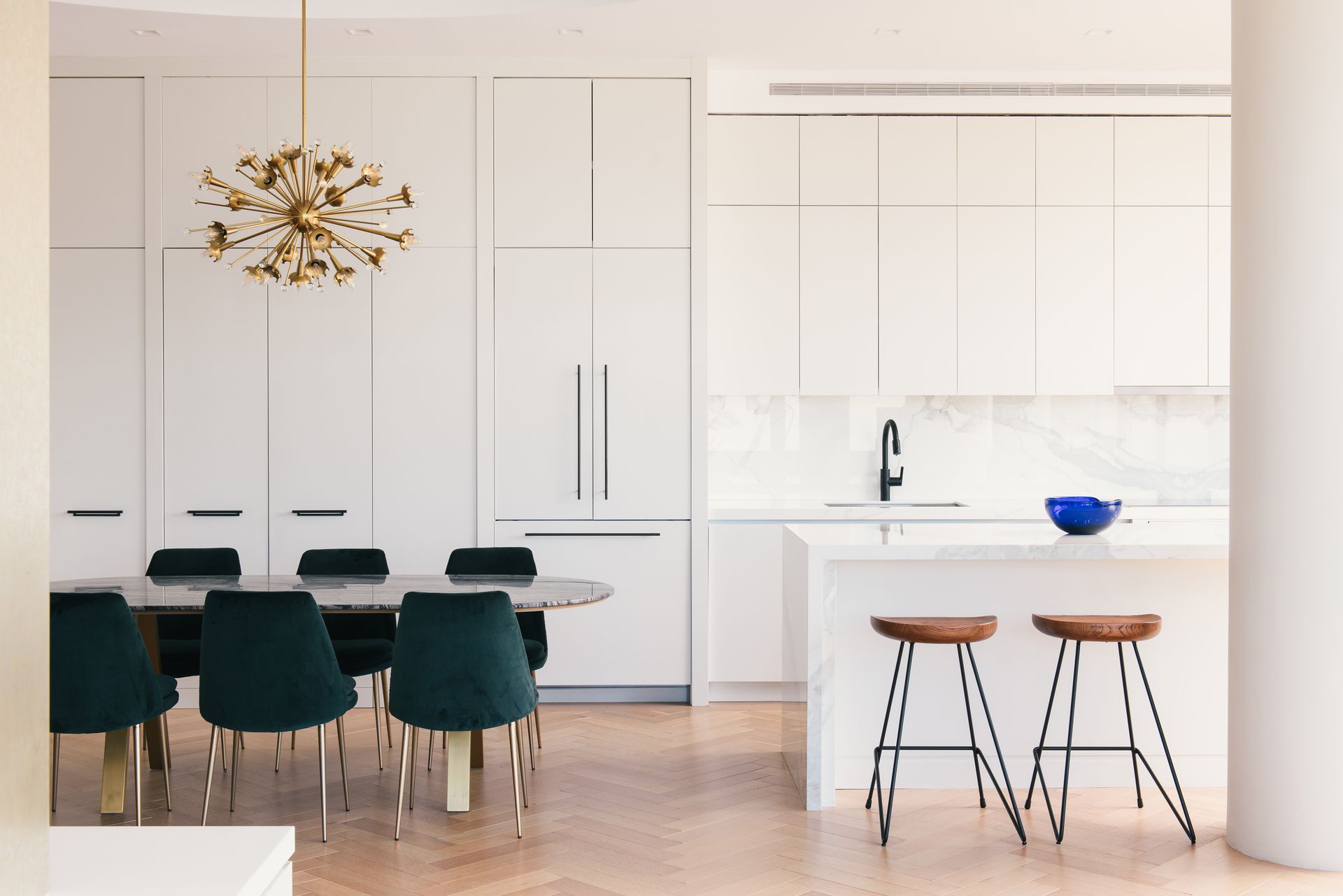
'Minimalism is all about living with less, so decluttering is a must,' says Julia. And a key way to manage your clutter is with clever storage solutions that blend into the scheme and are hidden away. Think storage solutions without handles but with a graceful push motion that opens your cupboard or cabinet.
'I always suggest having closed storage for all the items people need but don't want to see and also have some open storage like shelves or surfaces where the most meaningful and cherished items can be displayed and reflect the personality of the homeowner,' says Kashi of YAM. 'Storage allows the creation of space which feels effortless and simple while also being very practical for people who live in them.'
7. Bring the outdoors in
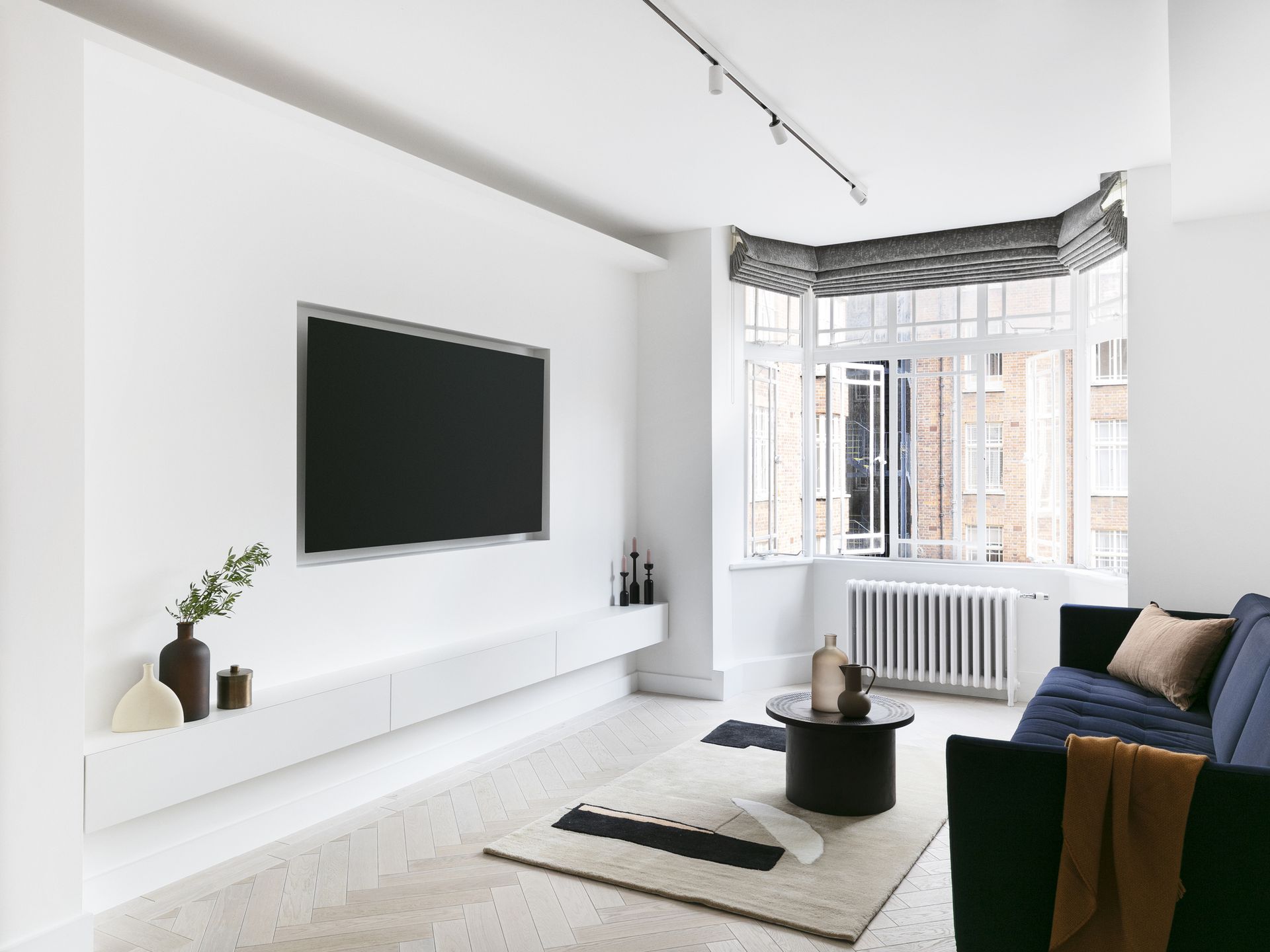
'Unnecessary decoration, frills, artworks or extras should be removed, consider the details and architecture of your home and honour this instead,' says interior designer, Ula Burgiel, who specializes in minimalism. Minimalism has strong ties to nature, with a strong focus on sustainability and looking after the planet with pieces that are timeless and natural materials used within the home.
So when introducing a couple of accessories here and there, avoid trinkets and instead bring the outdoors in with a few indoor plants for minimalists. Don't go overboard, and keep things simple as with this example from Lior Brosh. One vase with a few springs of olive tree is enough to allude to the natural world, or a potted indoor tree in the corner of the room.
Why is minimalist decor so popular?
'Whilst some people have been embracing pattern and colour at the start of a very tumultuous period of being at home over Covid lockdowns, others have sought to ‘bring calm home’ during these uncertain times,' says Theres Hoyos, creative director at MAIE. 'I think minimalism has never gone out of fashion, but we are rather embracing a different, warmer side of it: soft minimalism, if you will,'
Coupled with the sense of calm that minimalism can bring to a home, there is a growing longing for more considered design, searching for craft, natural materials and a way of connecting to nature within one’s home. 'Minimalist spaces allow us to create focus by highlighting thoughtful design pieces, carefully sourced or even made for a specific area within a home,' adds Theres.
Finally, minimalism evokes a sense of luxury. 'Textures and finishes like wood, hemp, linen and natural stone help infuse spaces with a grounding sense of serenity, while elevating in an intentionally sleek, yet luxurious way.'
Be The First To Know
The Livingetc newsletter is your shortcut to the now and the next in home design. Subscribe today to receive a stunning free 200-page book of the best homes from around the world.

Oonagh is a content editor at Livingetc.com and an expert at spotting the interior trends that are making waves in the design world. Writing a mix of everything and everything from home tours to news, long-form features to design idea pieces on the website, as well as frequently featured in the monthly print magazine, she's the go-to for design advice in the home. Previously, she worked on a London property title, producing long-read interiors features, style pages and conducting interviews with a range of famous faces from the UK interiors scene, from Kit Kemp to Robert Kime. In doing so, she has developed a keen interest in London's historical architecture and the city's distinct tastemakers paving the way in the world of interiors.
-
 The 12 Best Table Lamps for Reading —I'm a Certified Bookworm (and Shopping Expert)
The 12 Best Table Lamps for Reading —I'm a Certified Bookworm (and Shopping Expert)When it comes to table lamps for reading, I don't mess around. If you're the same, this edit is for YOU (and your books, or course — and good recommendations?)
By Brigid Kennedy Published
-
 "It's Scandi Meets Californian-Cool" — The New Anthro Collab With Katie Hodges Hits Just the Right Style Note
"It's Scandi Meets Californian-Cool" — The New Anthro Collab With Katie Hodges Hits Just the Right Style NoteThe LA-based interior designer merges coastal cool with Scandinavian simplicity for a delightfully lived-in collection of elevated home furnishings
By Julia Demer Published

